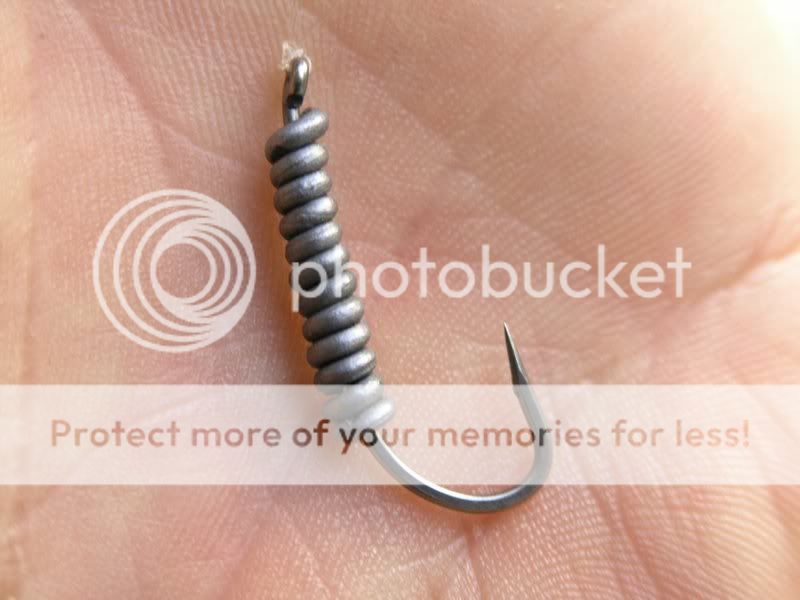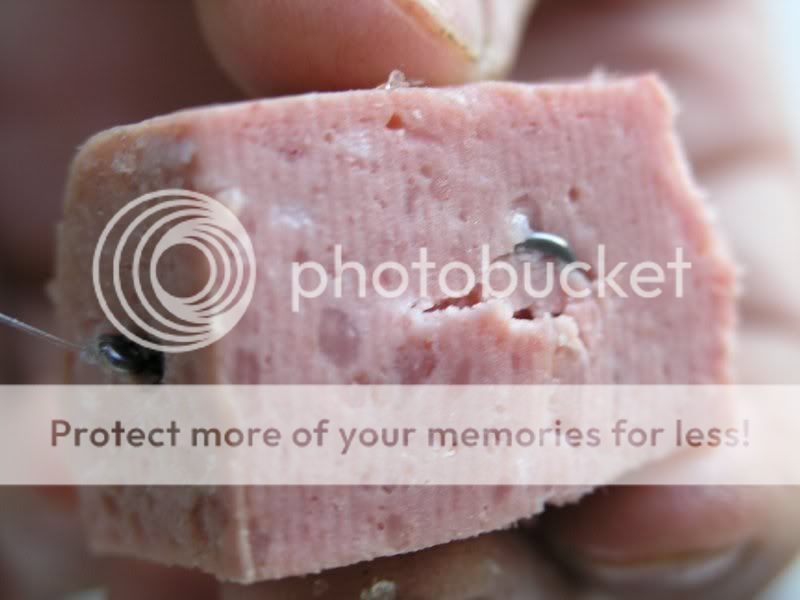Dan Birkett
Senior Member
Conrad, fly tying equipment suppliers will usually have lead wire in stock
Follow along with the video below to see how to install our site as a web app on your home screen.
Note: This feature may not be available in some browsers.
Hi Jon,
I'll tell you how I do it......
I use my 1 3/4 tc Barbel rod, fixed spool reel loaded with 12lb mono.
I have a boilie bait bag around my waste with my meat in it, a few hook's already loaded with lead wire and my chest waders.
The Chest waders are probably the most important item for me.
It means I can work along the river, and rarely have to miss any possible holding areas.
I load the meat like this...........




I tend only to fish on the bounce, in low clear conditions.
Summer on the middle Severn is ideal.
A static bait can be ignored all day long, and I often out fish the 'feeder lads' 6 or 7 fish to 1.
I tend to look for features like weed beds, depth changes, snags etc.
I love the swims there the river 'V's' from a smooth glide to fast broken water.
These coincide with a shallowing up of the river bed and some weed, and tend to hold a reasonable number of fish.
I like to get into the water and start at the upper end of the glide, working my bait along the far bank, mid river and near side, covering any spots that I feel will hold fish.
I normally have 4 or 5 casts on each line, varying the distance upstream I cast, as this controls how far down the swim the bait will work before if starts to get dragged off line.
Its all about the bow in the line for me.
Get this right and the bait will trundle along in a natural manner.
Too tight a line and it wont have reached bottom before its getting pulled off track.
Too much slack line and you wont 'feel' what's happening at the business end.
Dont panic if your bait gets snagged.
If you have buried the hook completely you should just be able to tease the bait out of the snag.
First I dip the rod under water. This increases the pressure and often pulls the bait out.
If the doesn't work, slowly wind up to the bait, taking the slack out until you are in direct contact, then just 'bounce' the rod slightly.
If this doesn't work, you will then have to wind up tight and give it a pull.
Which will either pull the hook out of the snag, or break the line (which is why I carry a few spare hooks and wire in my pocket).
The bites can be anything from a slight change in pressure to a decent 'thump' down the line or anything in between.
Regardless of the bite, I wind down fast, taking out the bow and sweep the rod back over my head... making contact.
I don't tend to have a landing net with me in the water, preferring to bring the fish to hand, pop the hook out, holding the fish for a few seconds upstream in the flow and then releasing it.
I do have a net on the bank normally, just in case I hook into a decent fish or the fish requires a bit of time to recover.
This is rare tho.
I use strong tackle and play the fish hard, so I normally bring them in to me quickly.
Its a real 'searching' technique for me.
Traveling light and covering lots of water.
I have tried it in coloured water, but I dont find it anywhere as productive, unles I'm fishing heavly flavoured baits and just inching them down the swim.
In the clear conditions I feel they are sight feeding, and the greed factor of not letting the bait go past, because if they do there will probably be another hungry mouth behind that will take advantage of the food.
I've even had barbel come a good few feet off the bottom to intercept baits that are either sinking of coming up off bottom at the end of the run.....
I dont 'feed' any freebies, as I want the fish to eat my hookbait.
I hope that helps a little.
Like I said, this is my way and other will have their own way of doing it.
Its one of those methods, that the more you do it the better you get at it.
Steve

It is only a matter of time before Swan Resue and the RSPCA spot it, and will conclude it is a way that anglers are loopholeing and flouting the law with no regard for wildfowl or environment.
